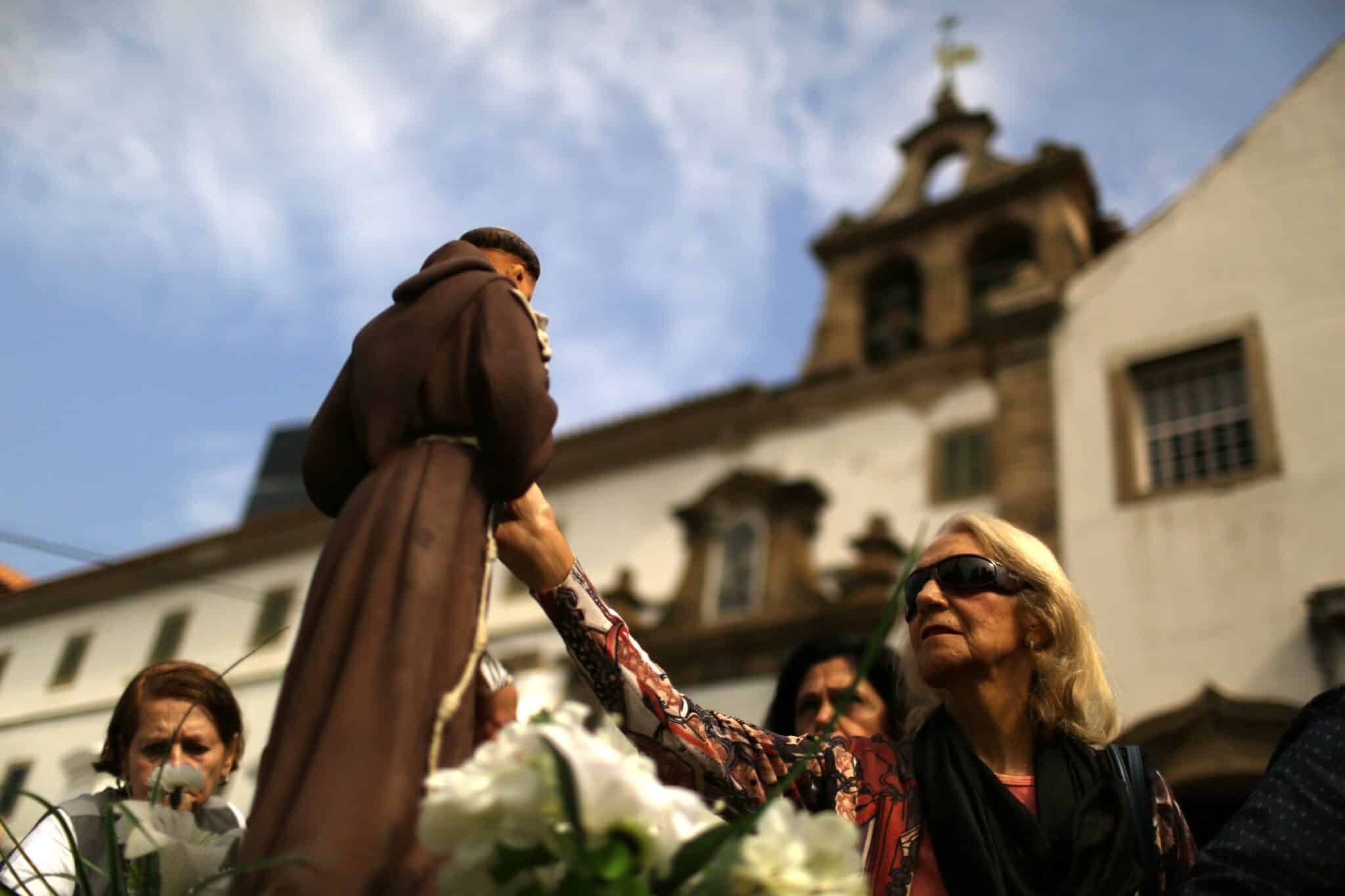St. Anthony is always asked to intercede with God for the return of things lost or stolen. Those who feel very familiar with him may pray, “Tony, Tony, look around. Something’s lost and must be found.”
The reason for invoking St. Anthony’s help in finding lost or stolen things is traced back to an incident in his own life. As the story goes, Anthony had a book of psalms that was very important to him. Besides the value of any book before the invention of printing, the psalter had the notes and comments he had made to use in teaching students in his Franciscan Order.
A novice who had already grown tired of living religious life decided to depart the community. Besides going AWOL he also took Anthony’s psalter! Upon realizing his psalter was missing, Anthony prayed it would be found or returned to him. And after his prayer the thieving novice was moved to return the psalter to Anthony and return to the Order which accepted him back. Legend has embroidered this story a bit. It has the novice stopped in his flight by a horrible devil brandishing an ax and threatening to trample him underfoot if he did not immediately return the book. Obviously a devil would hardly command anyone to do something good. But the core of the story would seem to be true. And the stolen book is said to be preserved in the Franciscan friary in Bologna.
In any event, shortly after his death people began praying through Anthony to find or recover lost and stolen articles. And the Responsory of St. Anthony composed by his contemporary, Julian of Spires, O.F.M., proclaims, “The sea obeys and fetters break/And lifeless limbs thou dost restore/While treasures lost are found again/When young or old thine aid implore.”
St. Anthony and the Child Jesus
Anthony has been pictured by artists and sculptors in all kinds of ways. He is depicted with a book in his hands, with a lily or torch. He has been painted preaching to fish, holding a monstrance with the Blessed Sacrament in front of a mule or preaching in the public square or from a nut tree.
But since the 17th century we most often find the saint shown with the child Jesus in his arm or even with the child standing on a book the saint holds. A story about St. Anthony related in the complete edition of Butler’s Lives of the Saints (edited, revised and supplemented by Herbert Anthony Thurston, S.J., and Donald Attwater) projects back into the past a visit of Anthony to the Lord of Chatenauneuf. Anthony was praying far into the night when suddenly the room was filled with light more brilliant than the sun.

Jesus then appeared to St. Anthony under the form of a little child. Chatenauneuf, attracted by the brilliant light that filled his house, was drawn to witness the vision but promised to tell no one of it until after Anthony’s death.
Some may see a similarity and connection between this story and the story in the life of St. Francis when he reenacted at Greccio the story of Jesus, and the Christ Child became alive in his arms. There are other accounts of appearances of the child Jesus to Francis and some companions.
These stories link Anthony with Francis in a sense of wonder and awe concerning the mystery of Christ’s incarnation. They speak of a fascination with the humility and vulnerability of Christ who emptied himself to become one like us in all things except sin. For Anthony, like Francis, poverty was a way of imitating Jesus who was born in a stable and would have no place to lay his head.
Patron of Sailors, Travelers, Fishermen
In Portugal, Italy, France and Spain, St. Anthony is the patron saint of sailors and fishermen. According to some biographers his statue is sometimes placed in a shrine on the ship’s mast. And the sailors sometimes scold him if he doesn’t respond quickly enough to their prayers.
Not only those who travel the seas but also other travelers and vacationers pray that they may be kept safe because of Anthony’s intercession. Several stories and legends may account for associating the saint with travelers and sailors.
First, there is the very real fact of Anthony’s own travels in preaching the gospel, particularly his journey and mission to preach the gospel in Morocco, a mission cut short by severe illness. But after his recovery and return to Europe he was a man always on the go, heralding the Good News.
There is also a story of two Franciscan sisters who wished to make a pilgrimage to a shrine of our Lady but did not know the way. A young man is supposed to have volunteered to guide them. Upon their return from the pilgrimage one of the sisters announced that it was her patron saint, Anthony, who had guided them.
Still another story says that in 1647 Father Erastius Villani of Padua was returning by ship to Italy from Amsterdam. The ship with its crew and passengers was caught in a violent storm. All seemed doomed. Father Erastius encouraged everyone to pray to St. Anthony. Then he threw some pieces of cloth that had touched a relic of St. Anthony into the heaving seas. At once, the storm ended, the winds stopped and the sea became calm.
Teacher and Preacher
Among the Franciscans themselves and in the liturgy of his feast, St. Anthony is celebrated as a teacher and preacher extraordinaire. He was the first teacher in the Franciscan Order, given the special approval and blessing of St. Francis to instruct his brother Franciscans. His effectiveness as a preacher calling people back to the faith resulted in the title “Hammer of Heretics.” Just as important were his peacemaking and calls for justice.
In canonizing Anthony in 1232, Pope Gregory IX spoke of him as the “Ark of the Testament” and the “Repository of Holy Scripture.” That explains why St. Anthony is frequently pictured with a burning light or a book of the Scriptures in his hands. In 1946 Pope Pius XII officially declared Anthony a Doctor of the Universal Church. It is in Anthony’s love of the word of God and his prayerful efforts to understand and apply it to the situations of everyday life that the Church especially wants us to imitate St. Anthony.
While noting in the prayer of his feast Anthony’s effectiveness as an intercessor, the Church wants us to learn from Anthony, the teacher, the meaning of true wisdom and what it means to become like Jesus, who humbled and emptied himself for our sakes and went about doing good.








2 thoughts on “Devotion to St. Anthony of Padua”
St.Anthony has helped me too many times to count! I never worry, only ask and express my gratitude.
My Nanny(GrandMother) had a Beautiful 18″ statue of St. Anthony occupying a place of honor in her home. I grew up with him and sometimes stood before him to talk and pray. She taught us that. I have always Loved St. Anthony. He now lives with me. We still talk and pray and he guides me in decision, protects me in danger, teaches me to be humble so God will more certainly hear my prayers and of course, he directs me to anything I lose! He is most gracious to me. I’m grown up now…and interestingly, I married Anthony! GOD Bless you Father Norman Perry. Delighted to now be subscribed with you.
jmj
Comments are closed.